Mostrar el registro sencillo del ítem
Matrix and area effects on the nutritional condition of understory birds in Amazonian rainforest fragments
| dc.creator | Hernández-Palma, Angélica | |
| dc.creator | Stouffer, Philip C. | |
| dc.date.accessioned | 2018-08-08T19:20:09Z | |
| dc.date.available | 2018-08-08T19:20:09Z | |
| dc.date.issued | 2017 | |
| dc.identifier.issn | 2530-0644 | spa |
| dc.identifier.uri | http://hdl.handle.net/20.500.11761/34647 | |
| dc.description | Habitat loss and degradation rank among the most significant threats to global biodiversity (Barlow et al., 2016, Foley et al., 2005). Habitat loss often leads to fragmentation, which not only decreases the amount of habitat available for wild species, but at the same time increases the isolation of the remaining fragments, as well as the amount of edges around them (Kupfer et al., 2006, Lindenmayer and Fischer, 2006). Although evidence suggests the effects of fragmentation per se are not always as negative as previously thought (Fahrig, 2017), long-term experiments of habitat fragmentation demonstrate that reduced area, increased isolation, and increased proportion of edge habitat all have important negative implications on biodiversity and ecological processes (Haddad et al., 2015). | spa |
| dc.description.abstract | La pérdida y la degradación del hábitat se encuentran entre las amenazas más importantes para la biodiversidad mundial (Barlow et al., 2016,Foley et al., 2005). La pérdida de hábitat a menudo conduce a la fragmentación, que no solo disminuye la cantidad de hábitat disponible para las especies silvestres, sino que al mismo tiempo aumenta el aislamiento de los fragmentos restantes, así como la cantidad de bordes que los rodean (Kupfer et al., 2006,Lindenmayer y Fischer, 2006). Aunque la evidencia sugiere que los efectos de la fragmentación per se no son siempre tan negativos como se pensaba anteriormente (Fahrig, 2017), los experimentos a largo plazo de la fragmentación del hábitatdemuestran que el área reducida, el mayor aislamiento y una mayor proporción de hábitats de borde tienen implicaciones negativas importantes para la biodiversidad y los procesos ecológicos ( Haddad et al., 2015). | spa |
| dc.format | application/pdf | spa |
| dc.format.extent | 7 p. | spa |
| dc.language.iso | spa | spa |
| dc.publisher | Elsevier | spa |
| dc.relation | Scopus | spa |
| dc.relation.uri | https://www.sciencedirect.com/science/article/pii/S2530064417302183 | |
| dc.rights | Attribution 4.0 International | * |
| dc.rights.uri | http://creativecommons.org/licenses/by/4.0/ | * |
| dc.source | reponame: Repositorio Institucional de Documentación Científica Humboldt | spa |
| dc.source | instname: Instituto de Investigación de Recursos Biológicos Alexander von Humboldt | spa |
| dc.subject | Ptilocronología | spa |
| dc.subject | Tasa de crecimiento de la pluma | spa |
| dc.subject | Cambio de paisaje | spa |
| dc.title | Matrix and area effects on the nutritional condition of understory birds in Amazonian rainforest fragments | spa |
| dc.type | info:eu-repo/semantics/article | spa |
| dc.type.spa | Artículo | spa |
| dc.identifier.doi | https://doi.org/10.1016/j.pecon.2018.06.003 | spa |
| dc.title.english | Matrix and area effects on the nutritional condition of understory birds in Amazonian rainforest fragments | spa |
| dc.publisher.edition | Regular | spa |
| dc.subject.subjectenglish | Ptilochronology | spa |
| dc.subject.subjectenglish | Landscape change | spa |
| dc.subject.subjectenglish | Feather growth rate | spa |
| dc.subject.subjectenglish | Conservation | spa |
| dc.publisher.journal | Perspectives in Ecology and Conservation | spa |




